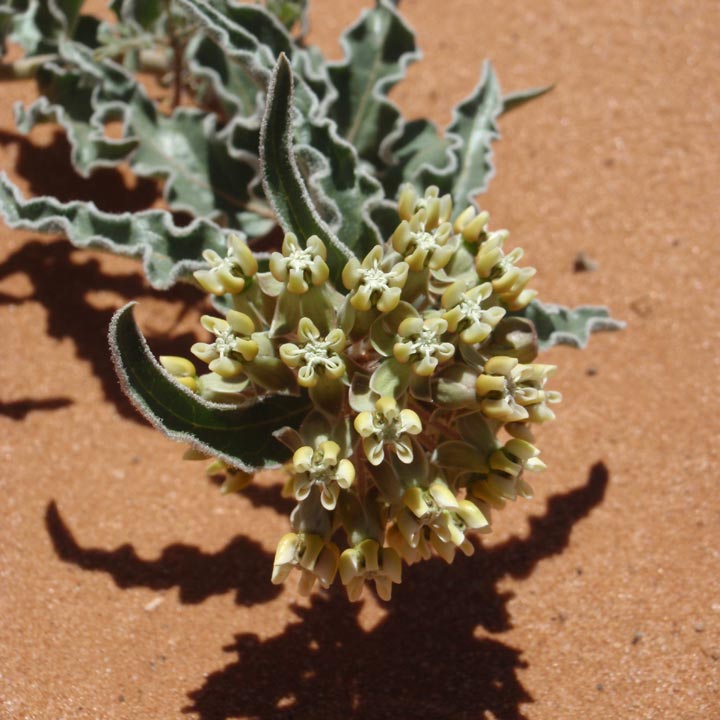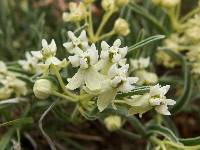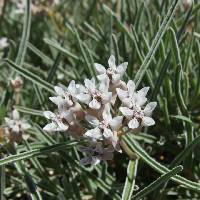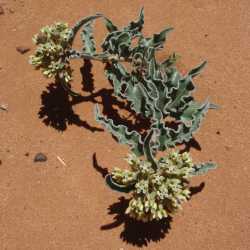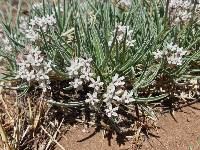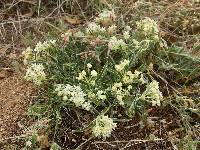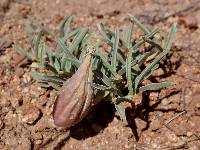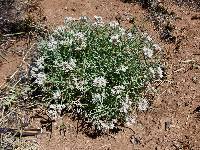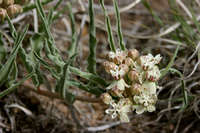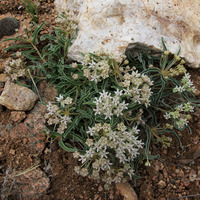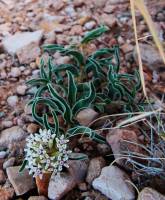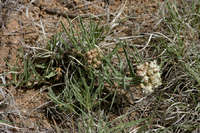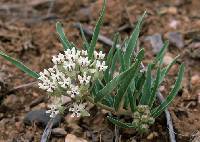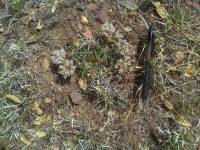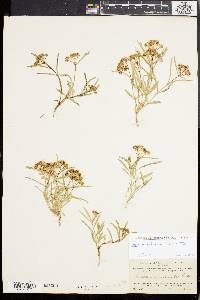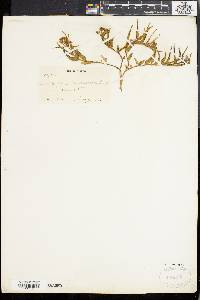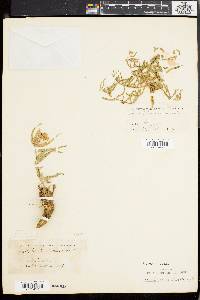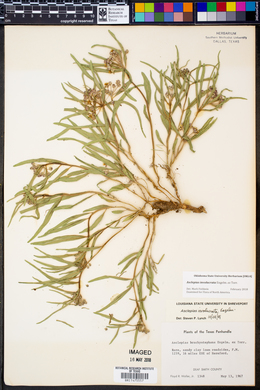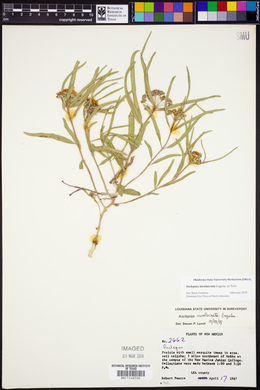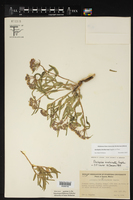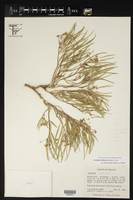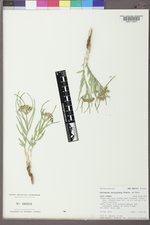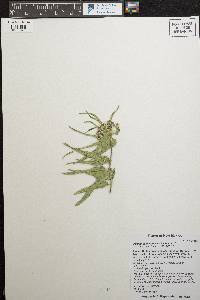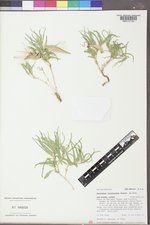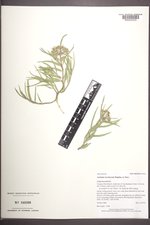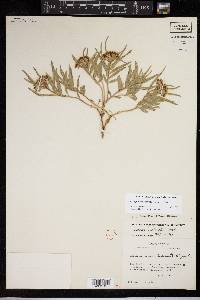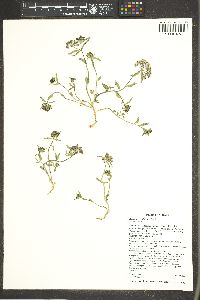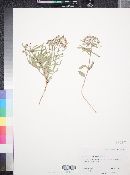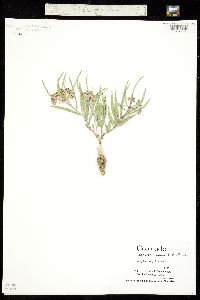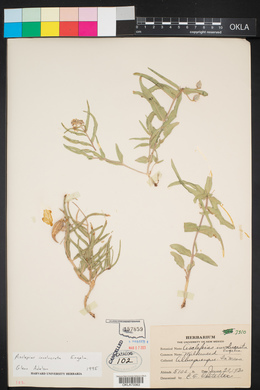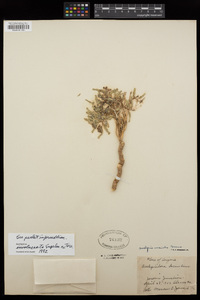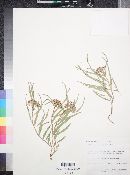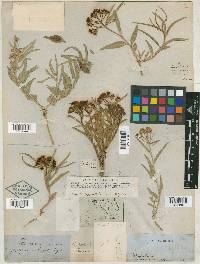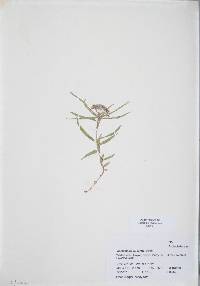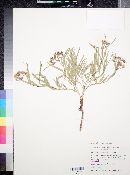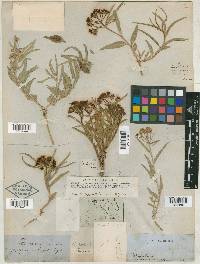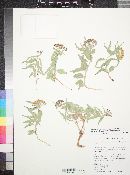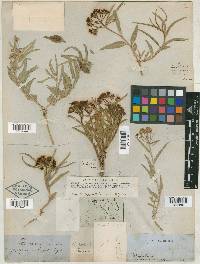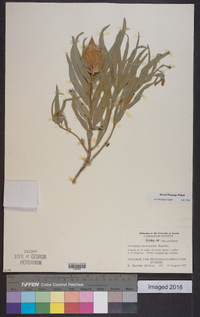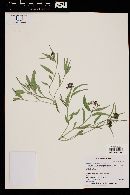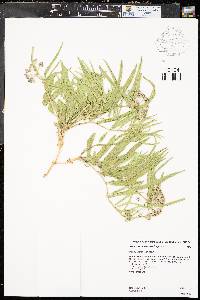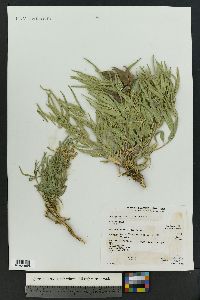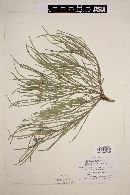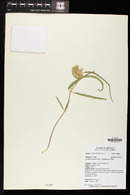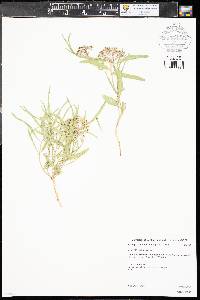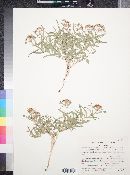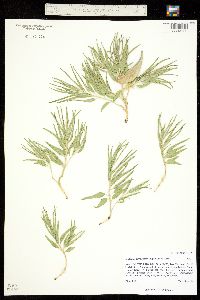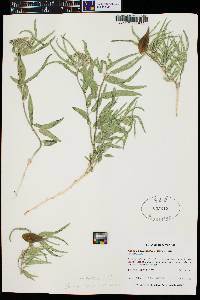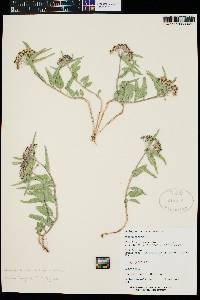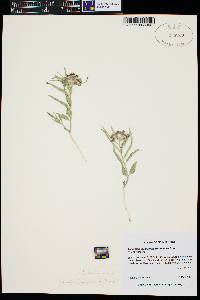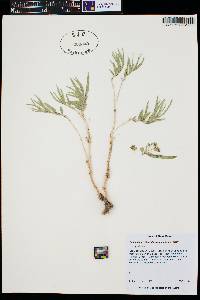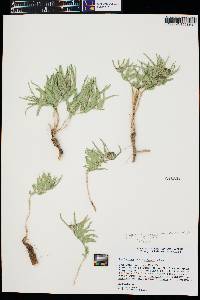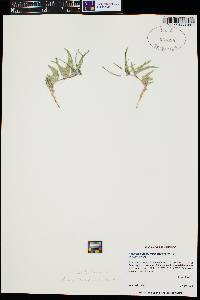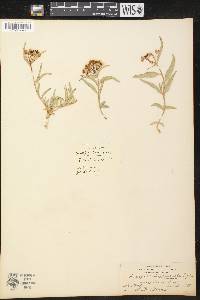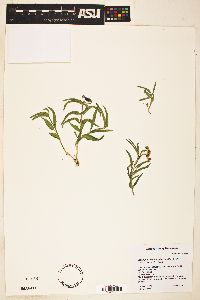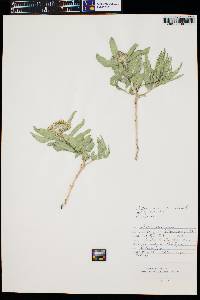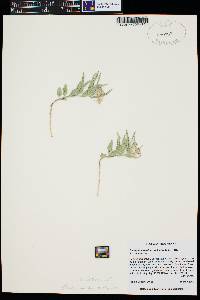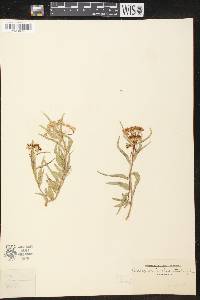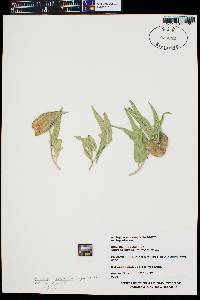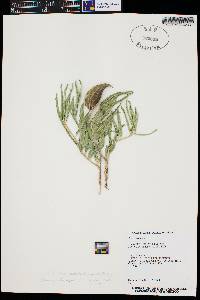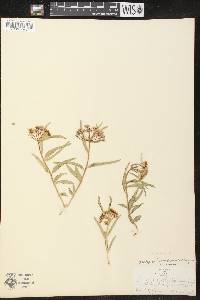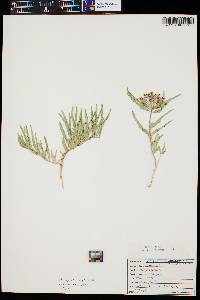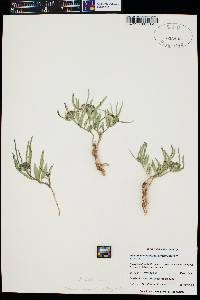Asclepias involucrata
|
|
|
|
Family: Apocynaceae
|
Plant: perennial herb; vegetative parts sparsely to densely covered with short curly hairs; stems several to many from the root crown, loosely ascending to horizontally spreading, sparingly branched below, 10-20 cm long; milky sap Leaves: mostly erect, subopposite to irregularly alternate, subsessile, the petioles 1-3 mm long, the blades ovate to mostly lanceolate or oblong-linear, becoming more or less narrower upwards, 1-6 cm long, 5-25 mm broad, long attenuate, acute to obtuse apically, acute to obtuse or rounded at the base, the margins short woolly, the upper surface glabrous or nearly so, the lower surface glabrate, pubescent or sparsely short woolly INFLORESCENCE: UMBELS solitary and terminal on the longer branches, sessile, more or less closely subtended by 1-4 leaflike bracts, 2-5 cm broad Flowers: small; calyx lobes ca. 3 mm long; corolla greenish to purplish, the lobes 4-6 mm long; hoods mostly white to yellow, quite variable in form, erect-ascending to divergent, narrowly to very broadly obovoid to rarely somewhat oblong, widening upward to a truncate or oblique rim, mostly broader than long, 2.2-4.2 mm long along the dorsal surface, 1.2-3.8 mm broad across the top, as long as to ca. 1 mm longer than the gynostegium, the horns attached near the middle of the hoods, radially flat, incurved, exserted 0.5-2 mm; anther wings 1.2-1.6 mm long; corpusculum 0.3-0.4 mm long, the pollinia 0.8-1 mm long Fruit: FOLLICLES erect on deflexed to spreading pedicels, 3.5-6 cm long Misc: Sandy desert scrub, grassland, oak and pine woodland; 1150-2200 m (3700-7300 ft); Apr-Jul REFERENCES: Sundell, Eric. 1994. Asclepiadaceae. J. Ariz. - Nev. Acad. Sci. Volume 27, 169-187. Sundell 1993, Woodson 1954, Kearney and Peebles 1969, Allred et al 2012, Welsh et al 1987 Duration: Perennial Nativity: Native Lifeform: Forb/Herb General: Low herbaceous perennials to 25 cm tall (or long); stems several to many from the root crown, loosely ascending to horizontally spreading, sparingly branched below; herbage sparsely to densely covered with short curly hairs; plants with milky sap. Leaves: Subopposite to irregularly alternate; subsessile on 1-3 mm petioles; blades erect, ovate to mostly lanceolate or oblong-linear, becoming more or less narrower upwards, 1-6 cm long, 5-25 mm wide, tips long-attenuate and acute to obtuse, bases acute to obtuse or rounded, margins short-woolly, upper surfaces glabrous or nearly so, and lower surfaces glabrate, pubescent, or sparsely short woolly. Flowers: Small, yellowish, in large showy umbels, these solitary, sessile, terminal on the longer branches, and subtended by 1-4 leaflike bracts, these 2-5 cm wide; corollas greenish to purplish, the lobes 4-6 mm long; hoods mostly white to yellow, quite variable in form, erect-ascending to divergent, narrowly to very broadly obovoid, widening upward to a truncate or oblique rim, mostly broader than long, 2-4 mm long along the dorsal surface, 1-4 mm broad across the top, as long as to ca. 1 mm longer than the gynostegium; the horns attached near the middle of the hoods, radially flat, incurved, exserted 0.5-2 mm; calyx lobes to 3 mm long. Fruits: Follicles erect on deflexed to spreading pedicels, 3.5-6 cm long. Ecology: Found in sandy desert scrub, chaparral, grasslands, dry plains, mesas, and oak-pine woodlands, on flats and in arroyos from 3,500-7,000 ft (1067-2134 m); flowers April-July. Distribution: AZ and UT, east through CO and NM to KS, OK, TX. Notes: This small, low-growing milkweed is distinguished by its white-yellowish flowers and the white-hairy margins of the long-triangular leaves. Has a similar semi-trailing growth form as A. brachystephana, but that species has purplish flowers and narrower, blue-tinged leaves that lack the distinct white-hairy margins of A. involucrata. Also strongly resembles the A. uncialis complex (including A. ruthiae, A. sanjuanensis) but those species have dark purple flowers. The species is said to be favored by jackrabbits. Some treatments, notably Welsh et al-s Utah Flora and Allred et al-s Flora Neomexicana consider A. macrosperma to be a separate species with wider leaves and more pubescent all over, but this guide follows Sundell et al-s treatment for Arizona in including A. macrosperma within A. involucrata. Ethnobotany: Infusion of plant used as a stomach medicine; poultice of heated roots applied for toothaches; dry powdered root mixed with saliva and used for unspecified illness. Etymology: Asclepias is named for the Greek God of healing Asklepios, and involucrata means provided with an involucre, referring to the leafy bracts that subtend the flower clusters. Synonyms: Asclepias macrosperma Editor: LCrumbacher 2012, AHazelton 2015 |
|
|
|

